As SAARC crumbles, are Pakistan, China and Bangladesh quietly moving on without India?
Trilateral talks in China's Kunming hint at shifting alliances in South Asia as India faces growing isolation from regional partners
Azhar Khan
Producer, Karachi Desk
Azhar Khan is a journalist with over 14 years of experience across print, electronic, and predominantly digital media. He has recently held key editorial roles at leading media organizations.
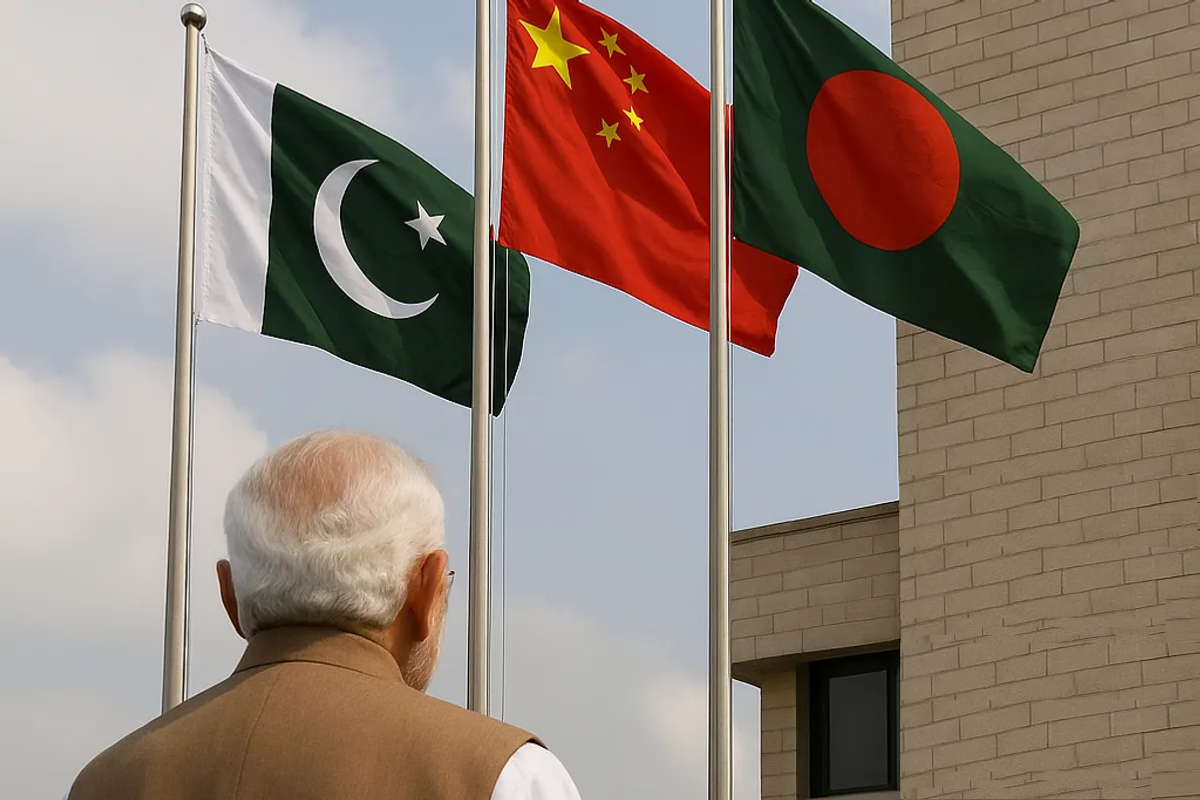
An AI-generated image shows Indian PM Narendra Modi from behind, gazing at the flags of Bangladesh, Pakistan, and China flying outside a building.
Nukta
The death of SAARC was never officially announced. No leaders signed a final communique, no flags were lowered. But as India and Pakistan dug into their old rivalries and summits were indefinitely postponed, South Asia’s most ambitious attempt at regional cooperation -- a bloc known as the South Asian Association for Regional Cooperation -- quietly faded into irrelevance, leaving behind a diplomatic vacuum few dared to fill.
Now, that may be changing.
Last month, in the southwestern Chinese city of Kunming, diplomats from China, Pakistan and Bangladesh quietly gathered for what could mark the beginning of a new regional order. Framed as Foreign Secretary-level talks, the meeting focused on trade, connectivity, green infrastructure and people-centric development. But beneath the bureaucratic language was a clear message: regional cooperation will no longer wait for SAARC’s resurrection -- or for India.
The trilateral framework is expected to expand and could one day include other South Asian nations. Whether India will be offered a seat -- or accept one -- remains an open question.
The Kunming meeting comes at a time of shifting alliances and subtle realignments across the region. “The trilateral thing -- China, Pakistan, Bangladesh -- and similar alignments with Afghanistan are symptoms of a new trend,” Aizaz Chaudhry, a former Pakistani foreign secretary, said in conversation with Nukta.
There’s no functioning regional mechanism left, and India’s isolationist approach has only widened the vacuum.
SAARC’s quiet collapse
Founded in 1985, the SAARC once held the promise of turning one of the world’s most fractious regions into a shared economic and political community.
Comprising eight member states -- Afghanistan, Bangladesh, Bhutan, India, Maldives, Nepal, Pakistan, and Sri Lanka -- the bloc aimed to promote collective self-reliance, regional integration, and social and economic development across South Asia.
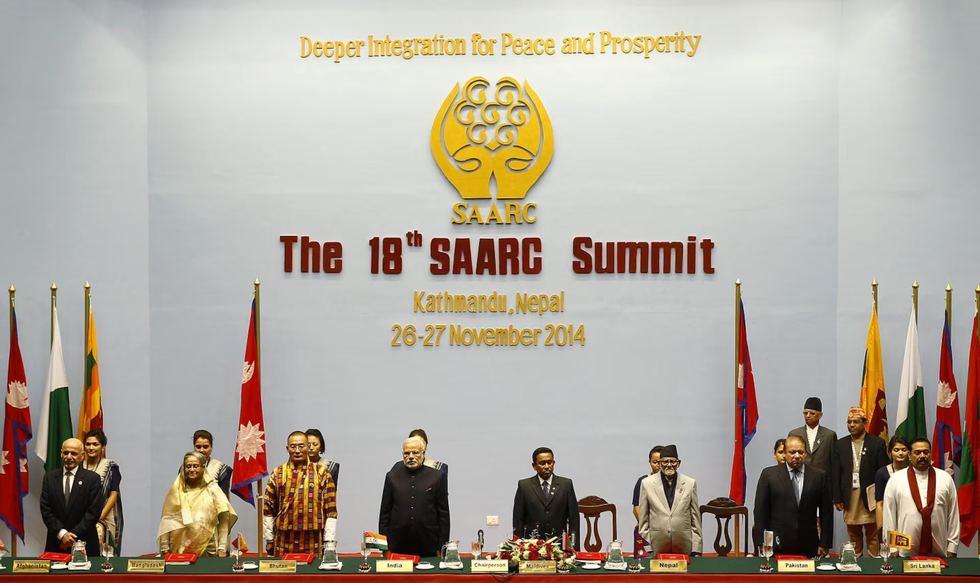
The SAARC Charter, signed in Dhaka, laid out broad objectives including accelerating economic growth, strengthening mutual trust, and improving the quality of life for South Asians. But the body has been dormant since 2016, when India pulled out of a planned summit in Islamabad following the Uri terror attack, blaming Pakistan for harboring militant networks.
Afghanistan, Bangladesh and Bhutan followed India’s lead, and the summit was cancelled. No subsequent summit has taken place. While India briefly revived engagement in 2020 through a SAARC-led COVID-19 Emergency Fund, structural cooperation has remained elusive.
India claims that Pakistan repeatedly blocked progress on key initiatives -- including the SAARC Motor Vehicles Agreement and joint counterterrorism mechanisms. Pakistan, for its part, accuses India of using bilateral tensions to hold the entire bloc hostage.
Now, rather than waiting for SAARC to return from diplomatic purgatory, some countries appear ready to move on.
A regional reset without Delhi?
The Kunming talks are part of a broader pattern of recalibrated relationships. Pakistan and Bangladesh, whose ties were historically frosty, have shown signs of rapprochement in recent years. Meanwhile, China has quietly cultivated deeper partnerships across South Asia through infrastructure investment, trade deals and pandemic-era support.
Masood Khalid, Pakistan’s former ambassador to China, sees an emerging convergence. “After the ouster of Hasina Wajid, there is a renewed urge in Bangladesh to seek regional collaboration and not rely solely on India,” he told Nukta. “Pakistan and Bangladesh relations have improved, and China enjoys strong ties with both. The three countries now see the need to work together in areas of shared interest.”
Khalid noted that while the new platform may not aim to formally replace SAARC -- which has eight member states -- its timing reflects growing fatigue with waiting for India and Pakistan to reconcile.
All countries of South Asia, except India, would like to see SAARC revived. But if that’s not happening, they are naturally inclined to seek alternatives.
The trilateral talks concluded with a plan to create a joint working group to explore collaboration across fields such as agriculture, marine sciences, education, cultural exchange, and digital economy. Officials described the discussions as “constructive” and “forward-looking.”
Who’s being left behind?
The Kunming initiative inevitably raises the question of India’s exclusion -- whether accidental, intentional or self-imposed.
India has historically resisted China's inclusion in SAARC and would likely view this new mechanism with suspicion, especially as it comes amid continued border tensions with Beijing and hostile diplomatic ties with Islamabad.
According to Chaudhry, India’s current geopolitical posture may be undermining its own aspirations. “In the Cold War, India led the Non-Aligned Movement. This time, it tried to lead the Global South -- but China has already taken that space,” he said. “As long as India maintains its current hegemonic posture and picks fights with its neighbors, the rest of the region will continue building ties without it.”
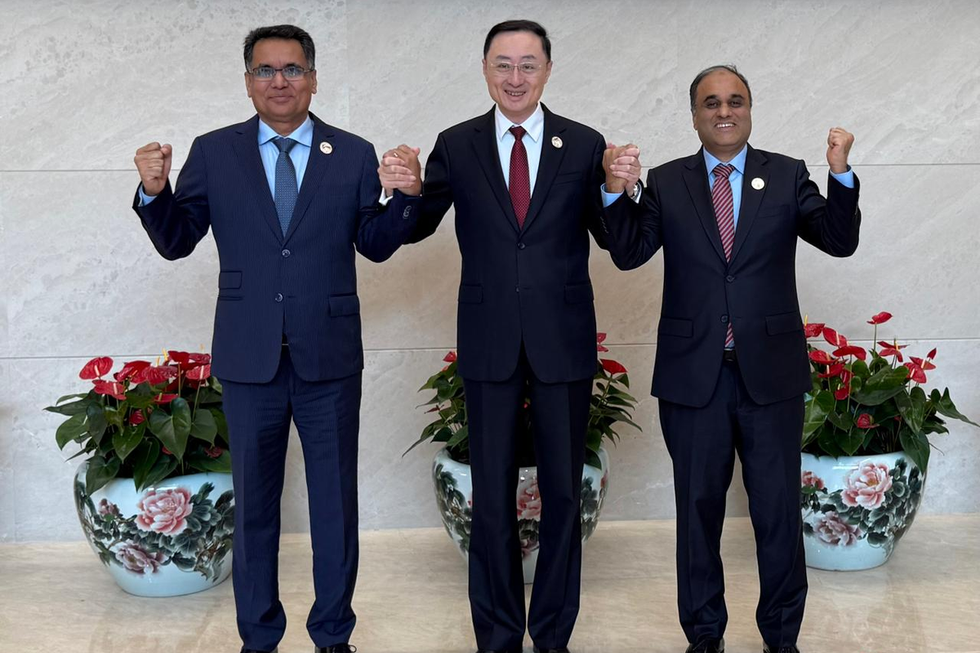
Still, neither Pakistan nor Bangladesh has publicly declared the Kunming talks as the launch of a formal bloc. But observers see it as an unmistakable signal: South Asia’s diplomatic center of gravity is shifting -- away from Delhi, and increasingly toward Beijing.
Khalid believes India may eventually be invited -- but may choose to stay out. “It would likely view this as a China-driven initiative and reject it, further isolating itself,” he said. “But every country has a sovereign right to pursue regional partnerships. No one should have veto power over that.”
A changing map
Whether the Kunming framework will evolve into a full-fledged regional bloc remains uncertain. But one thing is clear: the age of waiting for SAARC is over.
As India navigates its role in a world increasingly shaped by U.S.-China rivalry, its smaller neighbors appear unwilling to let regional cooperation remain hostage to historical grudges and political muscle-flexing.
“India’s neighbors will continue to explore collaboration without it if New Delhi maintains its current posture,” Chaudhry said. “But if there’s a change in government or tone, India could still re-enter the conversation.”
For now, what started as a quiet diplomatic gathering in a Chinese provincial city may just mark the first ripple of a new regional tide -- one that could reshape South Asia, with or without India.


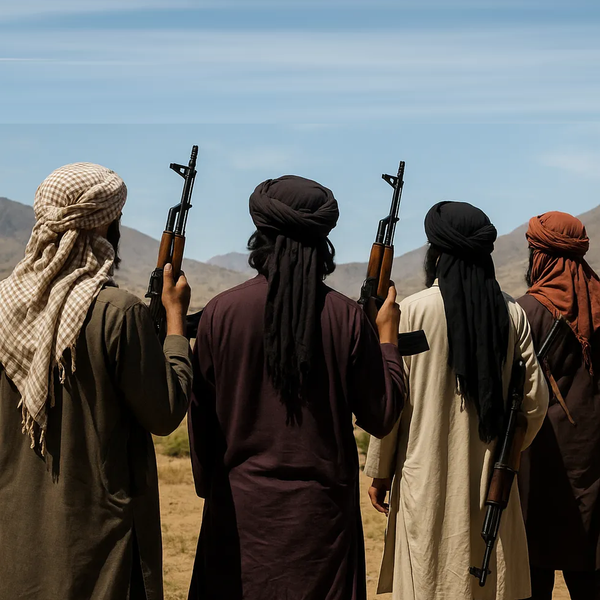
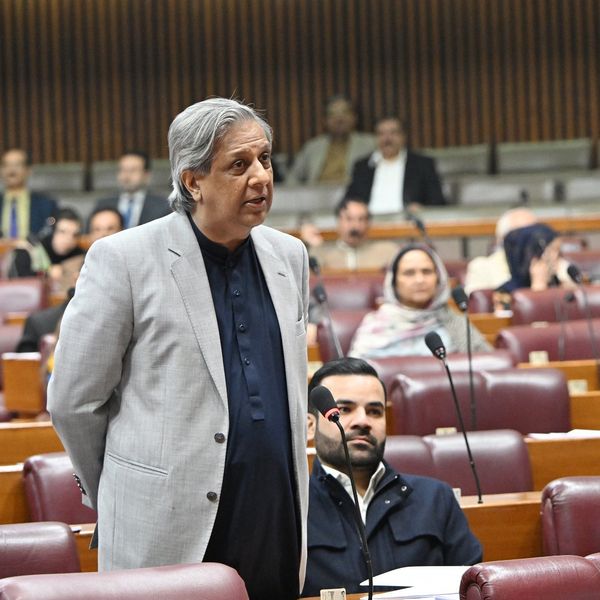

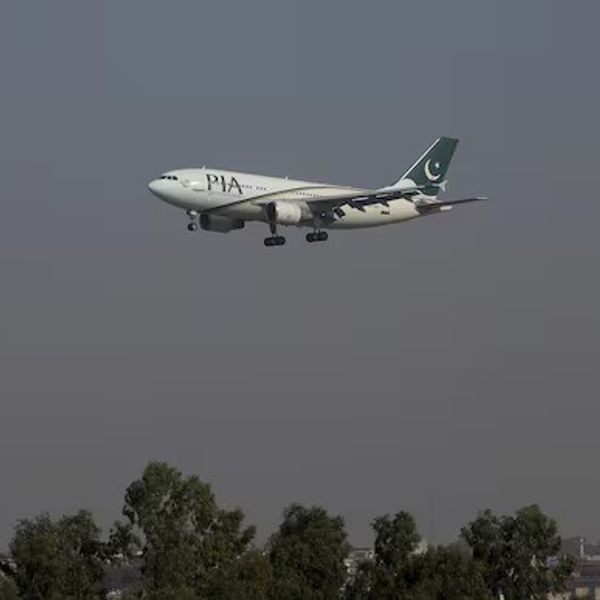




Comments
See what people are discussing